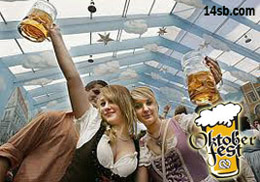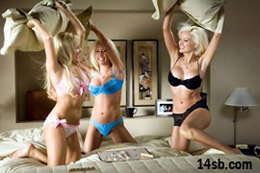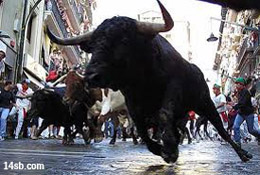Oktoberfest Hotels

We now have over 100 OKTOBERFEST hotel rooms available in MUNICH GERMANY.
We haven't listed yet them since event in several months away. If you're a group, company or serious about booking this event now, contact us for immediate bookings... 772-409-2214
Fast FACTS...
Visitors: 6.3 million (!)
Beer: 6,229,400 liters (+ 200,000 liters of non-alcoholic beer)
Wine: 36,138 liters
Sparkling wine: 22,066 bottles
Coffee, tea: 189,013 cups
lemonade: 721,761 bottles
Chicken: 487,487 units
Pork sausages: 190,635 pairs
Pork knuckles: 56,036 units
Pork knuckles: 56,036 units
Oxen: 91 units
Area: 103.79 acres
Seats in the festival halls: 98,000
Expenditure of electricity: 2,7 Mio. kWh
(as much as 14 % of Munich's daily need)
Expenditure of gas: about 184,299 m³
Expenditure of water: about 89,587 m³
(as much as 27% of Munich's daily need)
Waste 678 tons
Toilets 1450
Telephones 83
HISTORY
...October 12th, 1810
Crown Prince Ludwig, later to become King Ludwig I, was married to
Princess Therese of Saxony-Hildburghausen on October 12, 1810. The
citizens of Munich were invited to attend the festivities held on the
fields in front of the city gates to celebrate the happy royal event. The
fields have been named Theresienwiese ("Theresa's fields") in honor
of the Crown Princess ever since, although the locals have since
abbreviated the name simply to the "Wies'n".
Horse races in the presence of the Royal Family marked the close of the event that was celebrated as a festival for the whole of Bavaria. The decision to repeat the horse races in the subsequent year gave rise to the tradition of the Oktoberfest.
The Oktoberfest continues in 1811
In 1811 an added feature to the horse races was the first Agricultural Show, designed to boost Bavarian agriculture The horse races, which were the oldest and - at one time - the most popular event of the festival are no longer held today. But the Agricultural Show is still held every three years during the Oktoberfest on the southern part of the festival grounds.
In the first few decades the choice of amusements was sparse. The first carousel and two swings were set up in 1818. Visitors were able to quench their thirst at small beer stands which grew rapidly in number. In 1896 the beer stands were replaced by the first beer tents and halls set up by enterprising landlords with the backing of the breweries.
The remainder of the festival site was taken up by a fun-fair. The range of carousels etc. on offer was already increasing rapidly in the 1870s as the fairground trade continued to grow and develop in Germany..
174th Oktoberfest 2007
Today, the Oktoberfest is the largest festival in the world, with an
international flavor characteristic of the 21th century: some 6 million
visitors from all around the world converge on the Oktoberfest each
year.
And since the Oktoberfest is still held on the Theresienwiese, the locals still refer to the event simply as the "Wies'n". So "welcome to the Wies'n" means nothing other than "welcome to the Oktoberfest!"


 HALLOWEEN PARTY at the PLAYBOY MANSION... HOTEL ROOMS and Packages Click Here
HALLOWEEN PARTY at the PLAYBOY MANSION... HOTEL ROOMS and Packages Click Here Running Of the Bulls in Pamplona, Spain. Hotels CLICK HERE
Running Of the Bulls in Pamplona, Spain. Hotels CLICK HERE







